This trick should be easy, right?
Frontside Tailslide is a trick that may seem easy but is actually quite difficult to carry out.
What a mystery; Frontside 50-50s and Frontside 180s are both easy tricks. This trick should be somewhere between those two, so if it becomes significantly harder, there must be hidden science behind it.
Summary
Avoid leaning too far forward
If your weight is far from the tail by leaning forward, you have to move the tail for a longer distance which increases the chance of letting it hit the obstacle.
Aim closer to avoid letting the tail hit the obstacle
Also, trying to lock in closer reduces the chance of the tail hitting the obstacle. So, I recommend keeping your weight on the tail side while trying to lock in closer.
Simulation
Hit the icon to initiate 3d simulation.
Also, you can convert your video into a 3D animation. Please read more about it here.
COMMON PROBLEMS
Three common problems
Let's start by sorting out common problems. We'll classify common problems into three stages: reaching the top of an obstacle, locking in, and sliding.
We'll discuss what causes those problems in each stage and how to avoid them. If you are facing any other specific problem, please let me know in the comment section below.

Problem: Can't Reach Atop Obstacle
Symptoms
In this problem, the tail may hit the side of the obstacle, or you may find it hard to pop high enough. The same mistake can cause these symptoms.
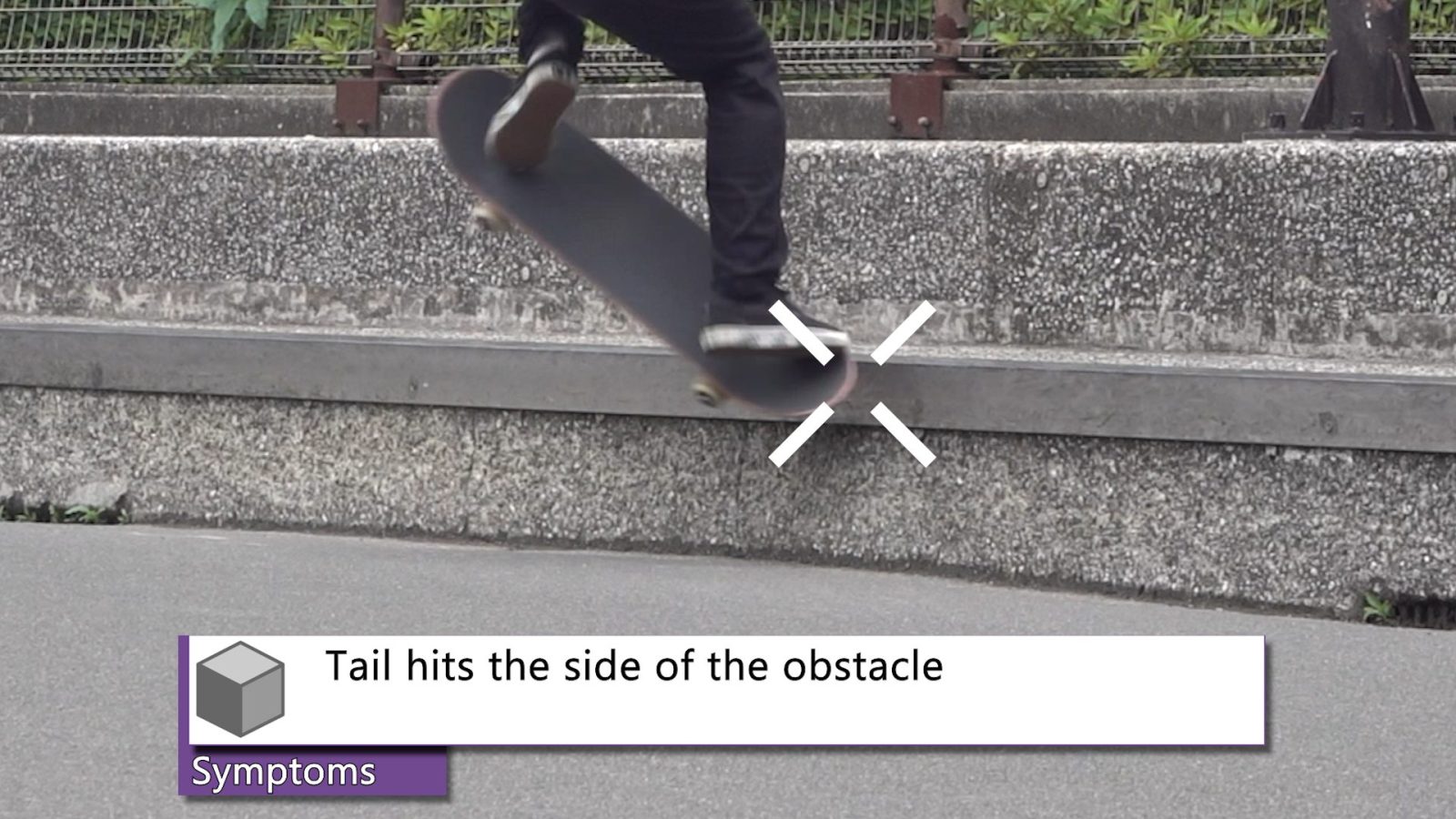
Cause: Leaning forward makes it hard to receive enough rebounds
When approaching the obstacle, both the obstacle and the direction you're heading are in front of you, which is the source of the problem.
In general, you tend to shift your center of gravity and body axis in the direction they're looking. Doing so widens the distance between the center of gravity and the tail, making it harder to receive enough vertical rebound from the ground.
Without enough rebounds, you can't lift your body effectively.
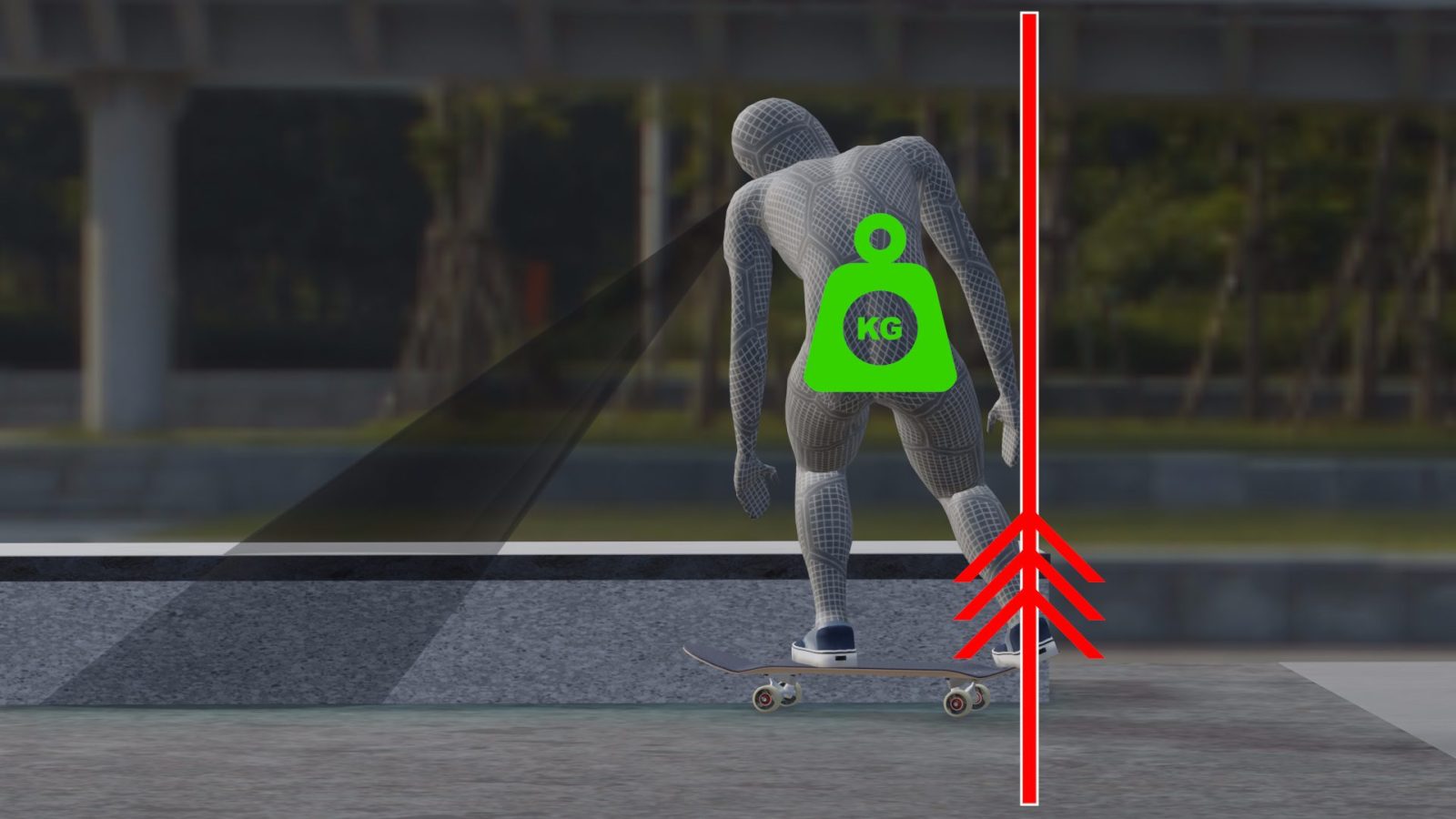
Cause: You may lean forward by looking too far forward
Also, if your line of sight is directed too far forward, and the distance between the tail and center of gravity widens too much, you have to move the tail for a long distance before locking in, increasing the chance of letting the tail hit the obstacle.
The symptom worsens when this "travel distance problem" and "not being able to receive the rebound problem" combine.

Solution: Have your weight on the tail side
Since the primary cause of this problem is having your center of gravity too far forward, you should try to keep it a little further back.
Having your center of gravity on the backside weakens the force that the front foot applies to the board and may cause a rocket ollie. But it helps you receive rebound from the ground effectively, and a rocket Ollie won't be a problem in a tailslide.
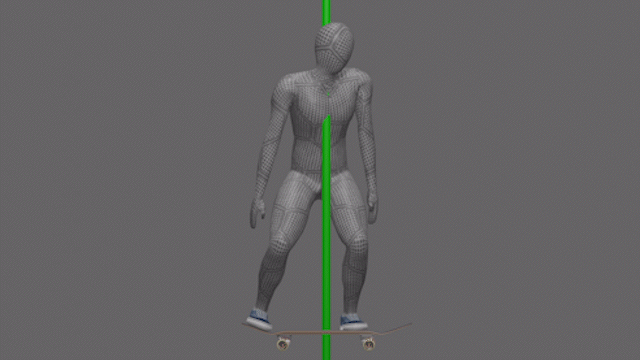
Solution: Shorten the turning radius
Also, the closer your center of gravity is to the tail, the smaller its turning radius becomes as you rotate it around the center of gravity.
Please imagine; when turning a board 90 degrees, the board with a smaller radius turns more quickly as it requires a shorter distance to complete the spin. In other words, when the radius widens, you have to push the tail longer.
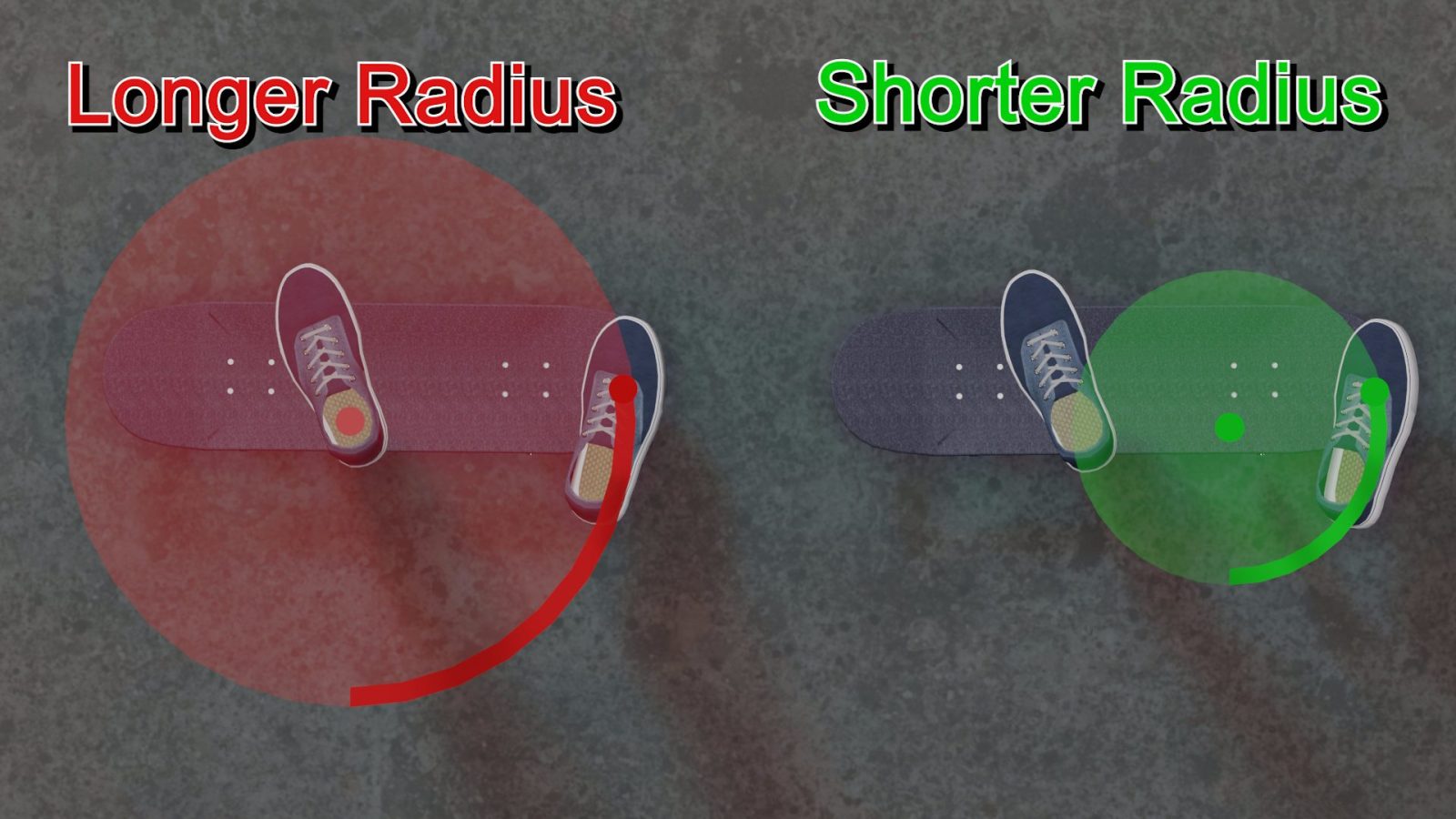
Problem: Can't Lock-in
Symptoms
In this problem, the tail gets higher than the obstacle, but you can't hold it. You may wind up doing a lip slide or shooting out your board.
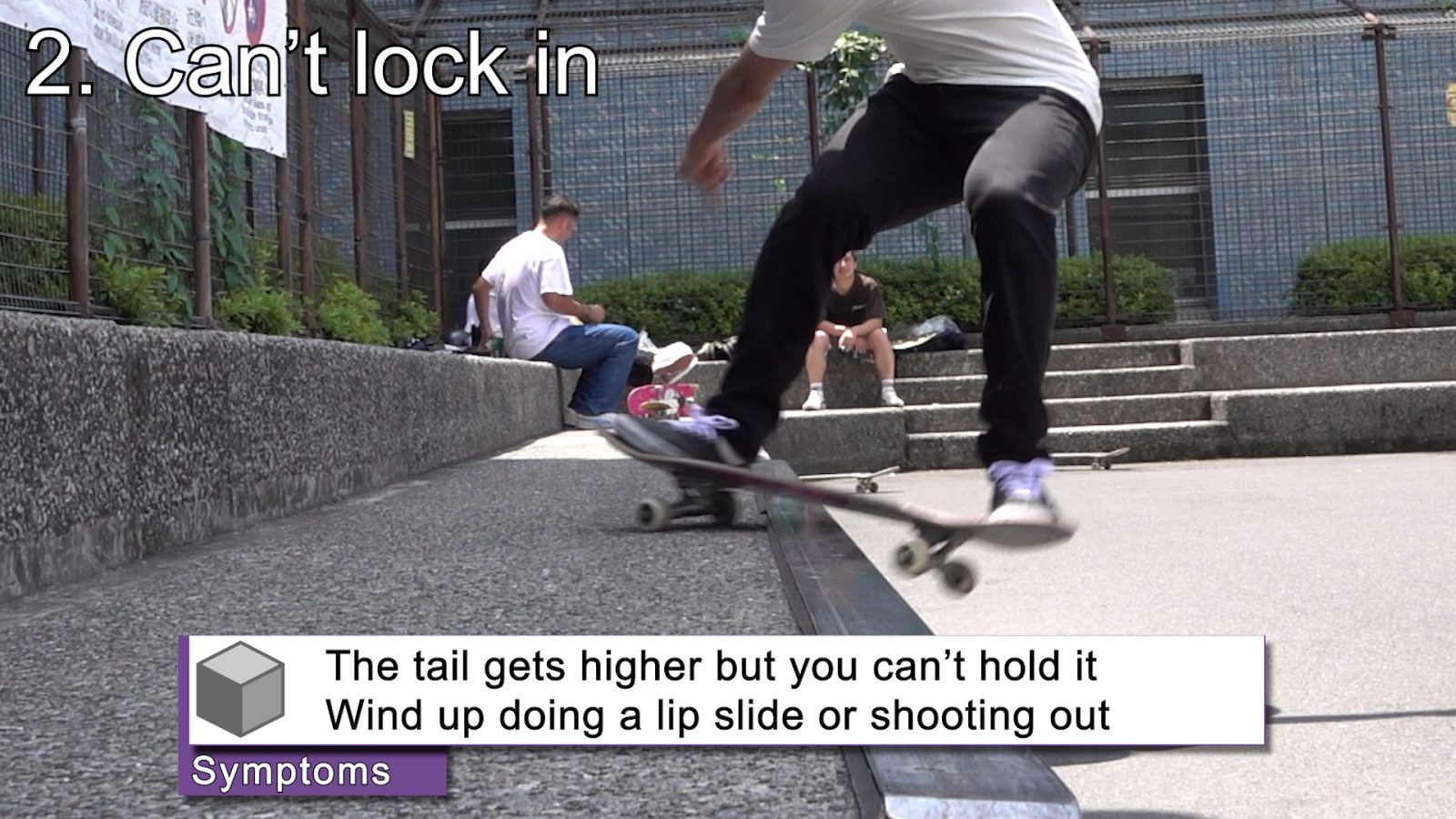
Cause: Too big approach angle
This problem occurs when trying to get onto an obstacle before lifting your body or when the approach angle is too big.
The approach angle is simple; you should approach an obstacle at around 10 to 20 degrees.
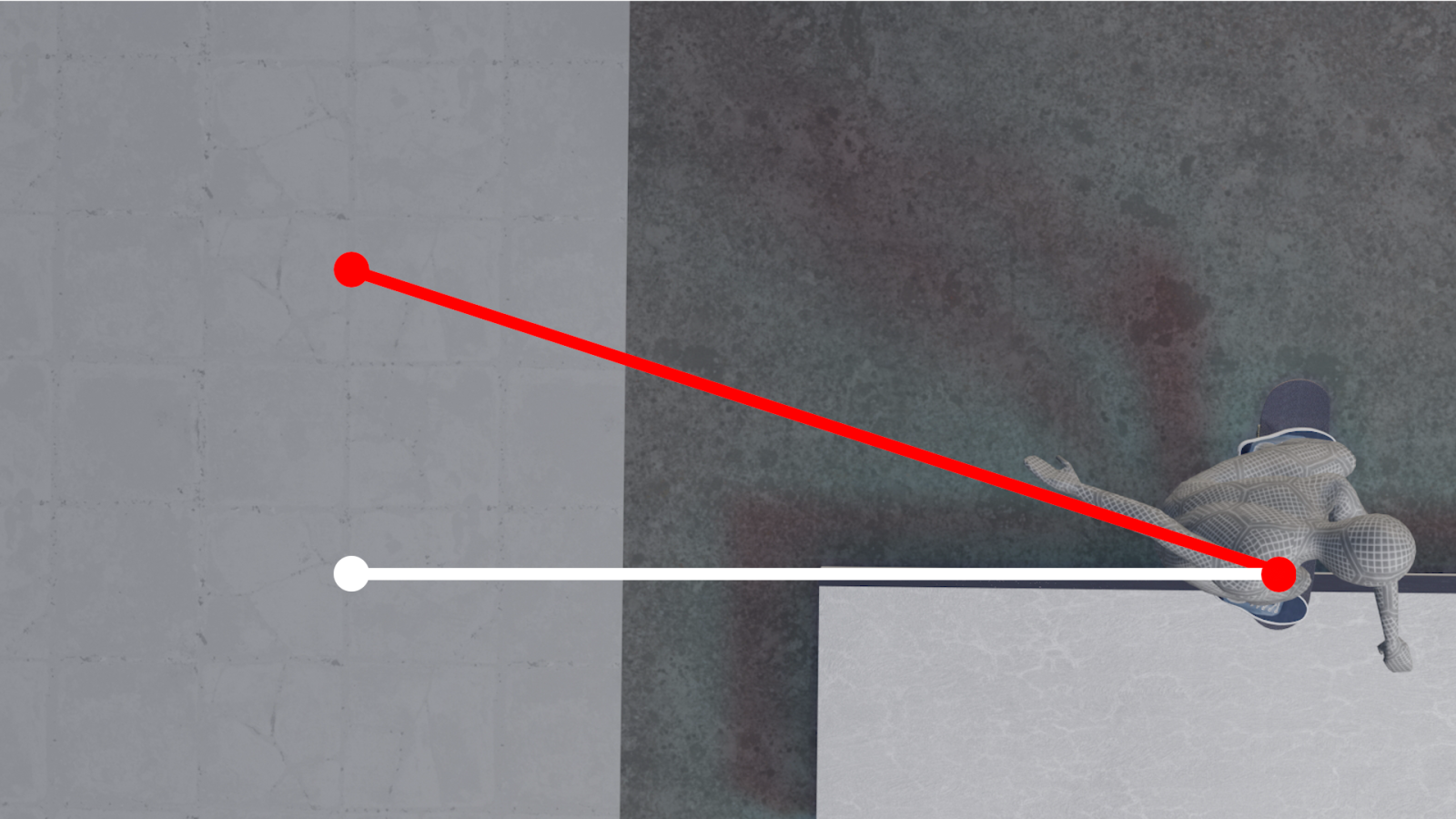
Cause: Popping without lifting your body
Obviously, to get your board on the obstacle, you have to pop the tail. However, if you pop without lifting your body, your board either stays low and hits the obstacle or even if it gets on the obstacle, it can't stay under you. The only place it can go is in front of you, away from your center of gravity.
Of course, you could bring the tail under the center of gravity by bending your knees, but it can be difficult as extending your knees helps you overcome the resistance from the obstacles.
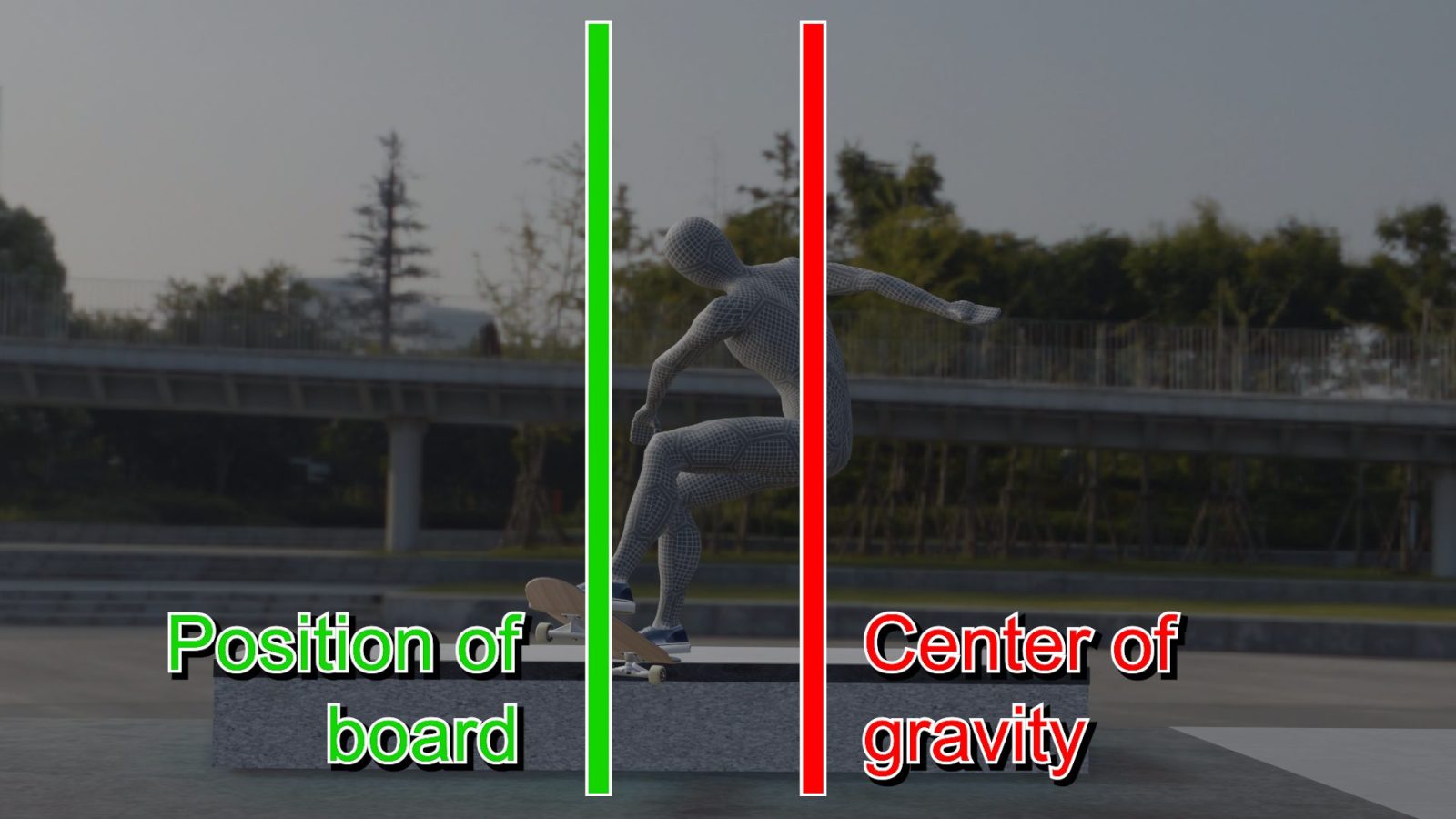
Solution
To solve this problem, try to lower your body, lift it and pop after that. In the previous content, I explained stretching the muscles before shortening them is key to generating greater power.
Use that concept, and make sure to bring your body to the right place first, which helps your board get closer to your center of gravity.
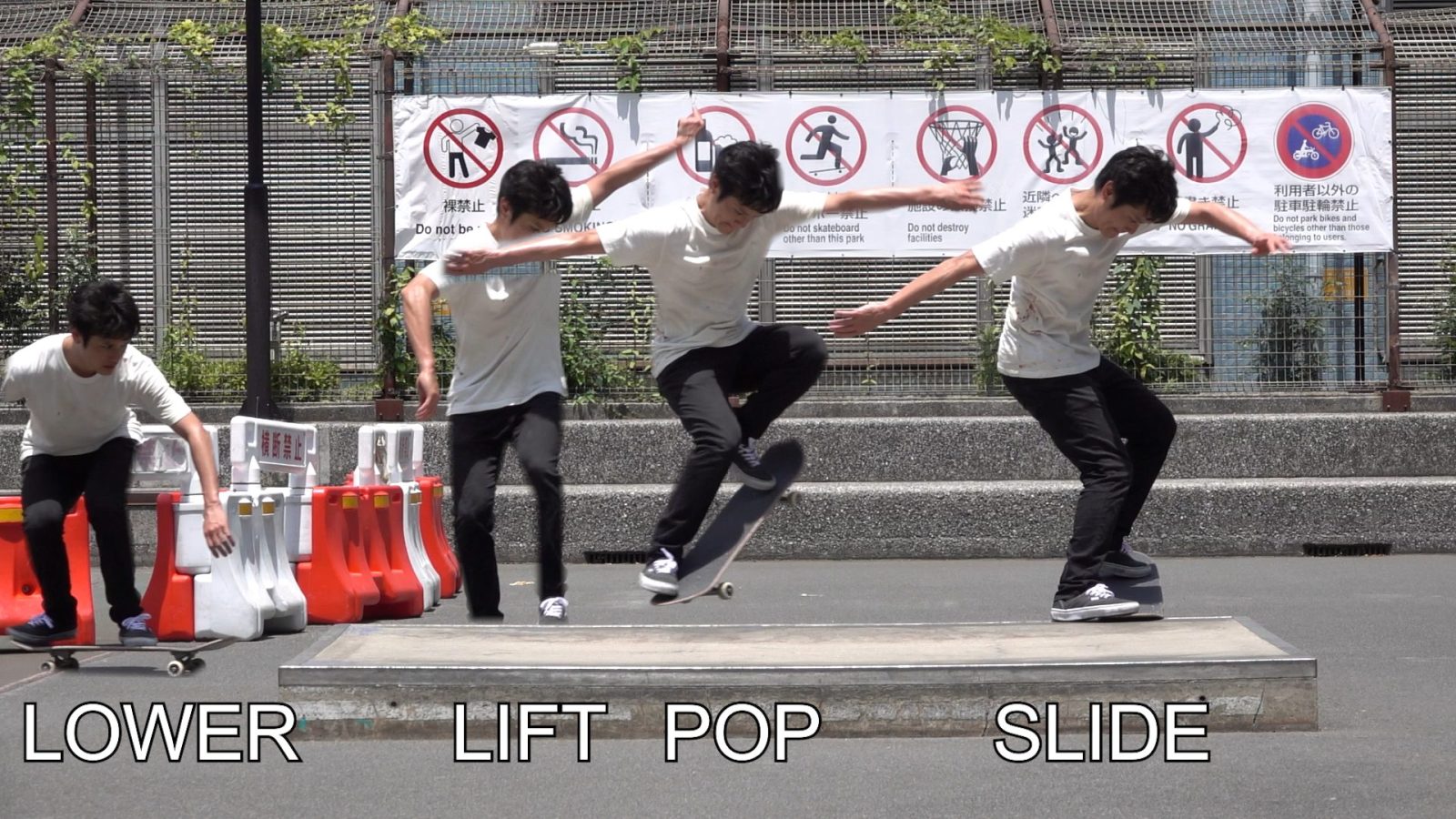
Can't Slide
Symptoms
If you follow the steps so far, you should be able to lock in. However, the problem is you may not be able to slide even when you think you've locked in perfectly. Let's see why.

Cause: Board not rotating enough
In many cases, this problem is due to the board not rotating properly and causing strong friction between the toe side wheel and the obstacle, which prevents it from sliding.
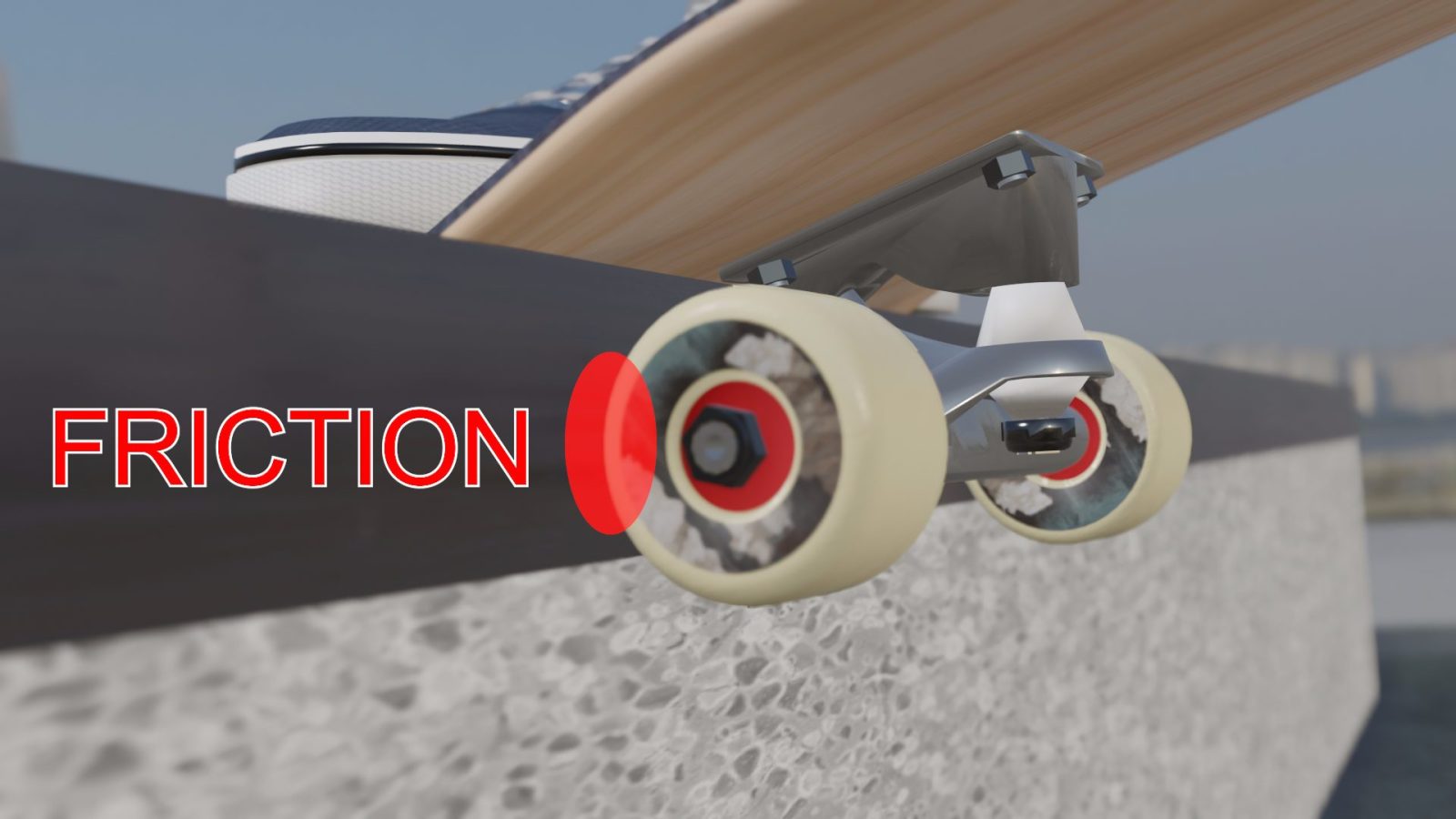
Solution: re-distribute your weight while approaching
As I said earlier, you can rotate your board more quickly by moving the center of gravity toward your back foot.
Note that the moment of locking in is not the only time you can adjust the weight distribution; you can do it while approaching.
By having your weight on the tail side before popping, you can keep the tail underneath you and reduce the distance you have to move it in the air, which also helps you maintain balance.
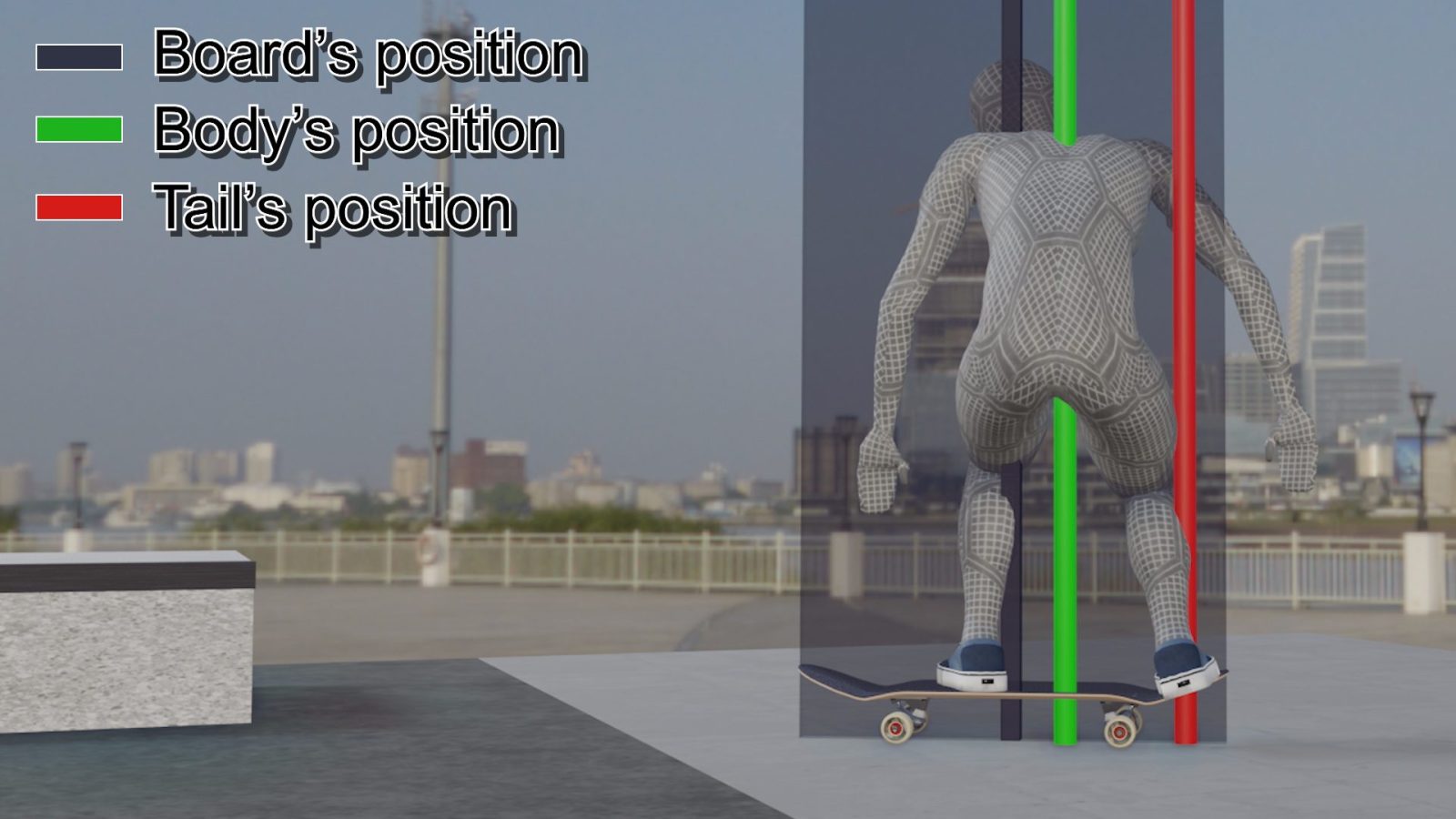
Solution: Look closer
Plus, where you lock in is also crucial. Trying to lock in far from your body increases the chance of letting the tail hit the obstacle.
Imagine the blue spot is where you are trying to lock in, and the green area is where the tail could hit. As you can see, you can minimize the green area where the tail could hit the obstacle by aiming closer.

Solution: Lock-in in the direction of your toes
But this is when the most tricky part of fs tailslide kicks in.
Because the obstacle is in front of you, your intention may go too far. Not to mention you should aim closer to avoid letting the tail hit the obstacle, you don't have to aim so far if you successfully shorten the turning radius.
Try to lock-in in the direction of your toes, not in the direction you are heading. Wait until the obstacle comes in front of your toes, and try to go for the shortest distance between your body and the obstacle.
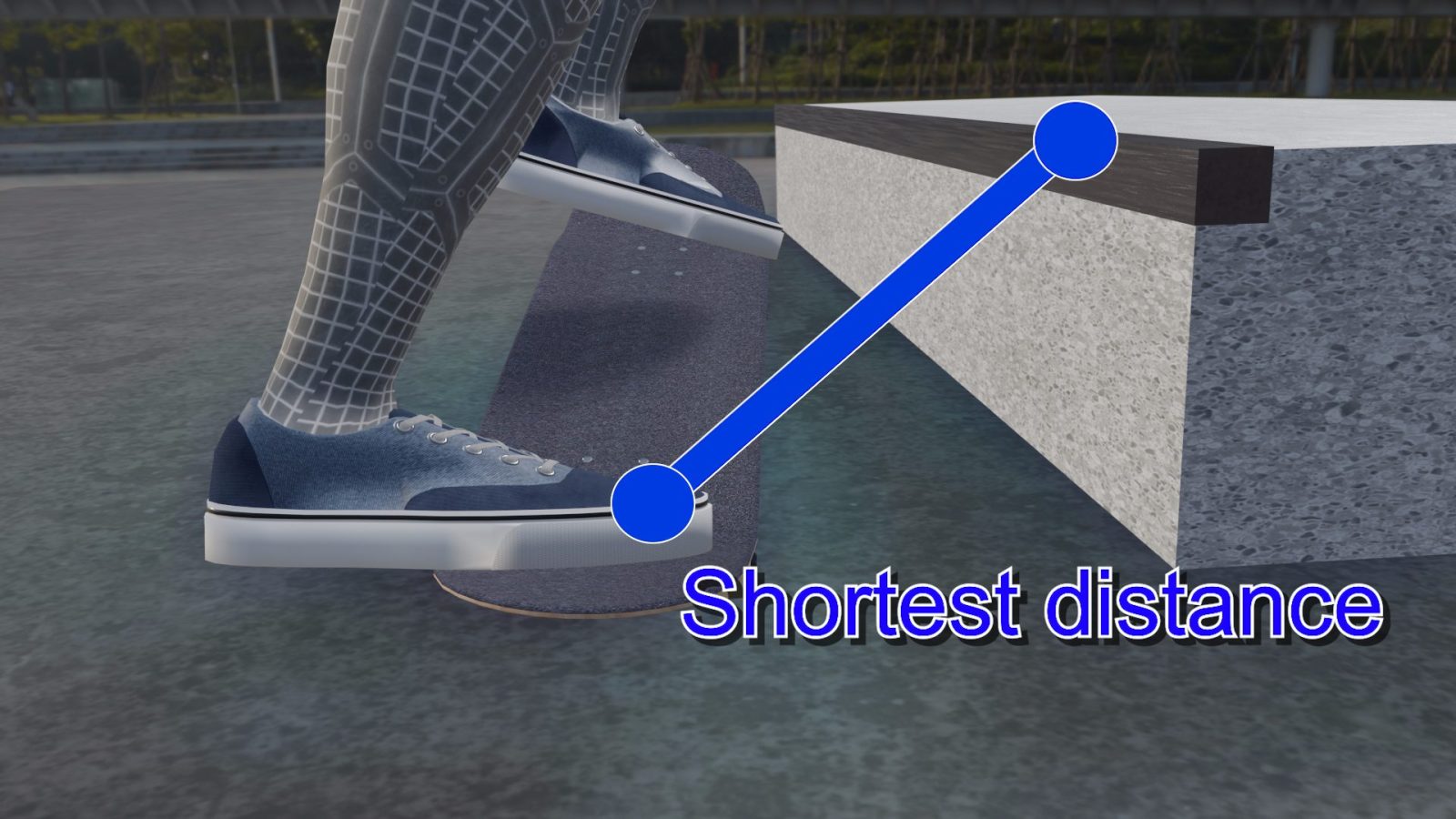
Foot placement
Like an Ollie but narrower
Finally, let's talk about foot placement. It's almost like an Ollie, but I put my front foot slightly narrower to support my weight farther back. The most important part is having your weight farther back, so foot placement itself is a way of execution. Please find the most suitable position yourself.

Remaining questions
There are still some problems that we need to address. For example, you may encounter a problem where your nose falls, and you can't hold the slide, or a problem in which you step off your board and gets on the obstacle. Let's study them further in the next content.
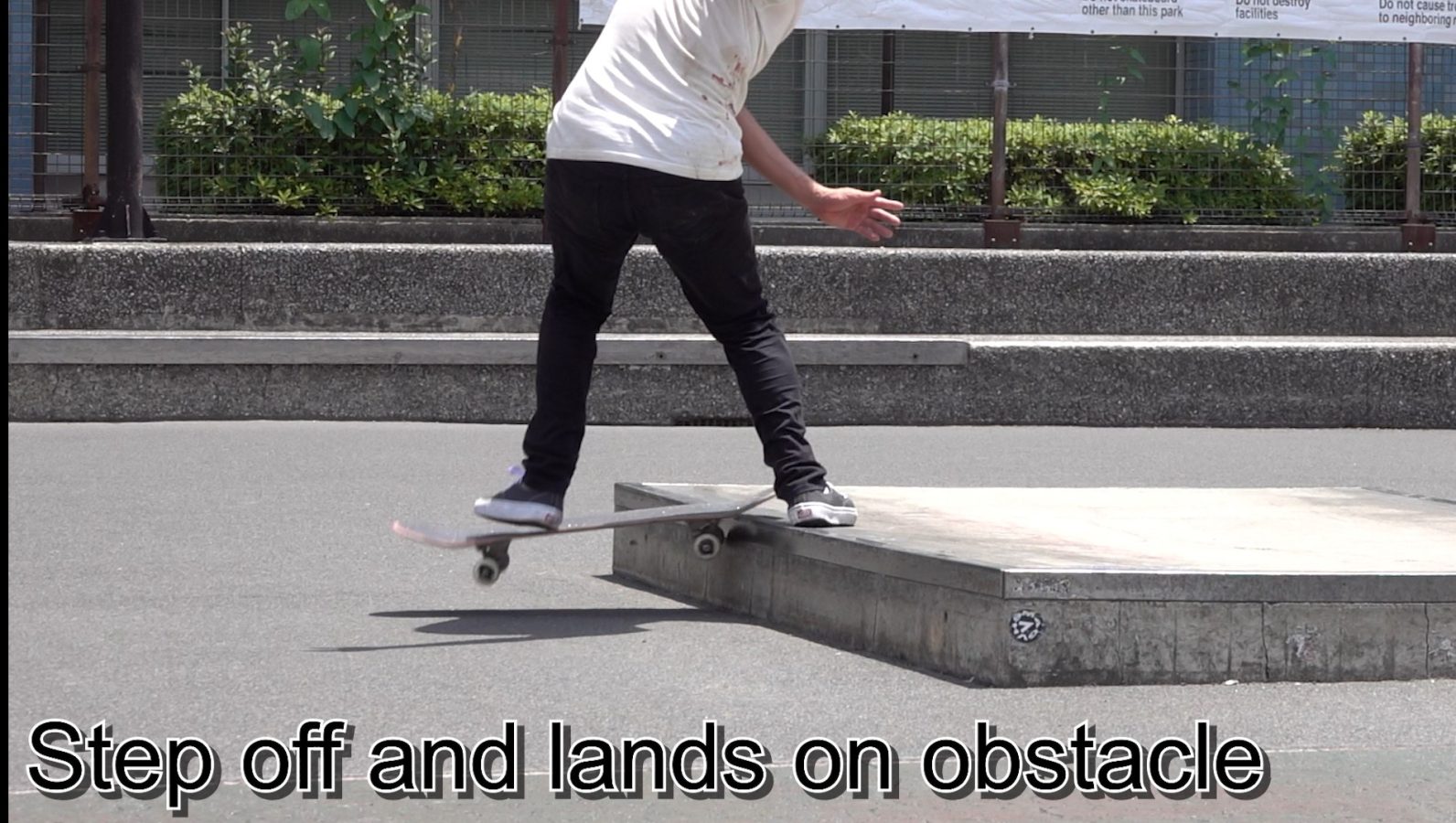
Tips
Let's study the trick further in detail.
Proceed from the links below.
Trouble Shooting
Let's study the trick further in detail.
Proceed from the links below.
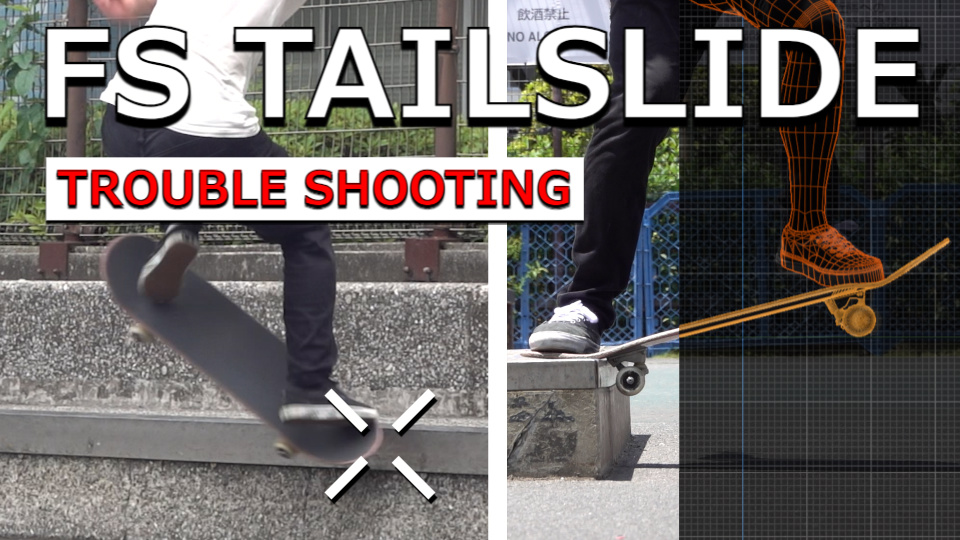


 Convert your video into 3D
Convert your video into 3D Facebook
Facebook Twitter
Twitter

